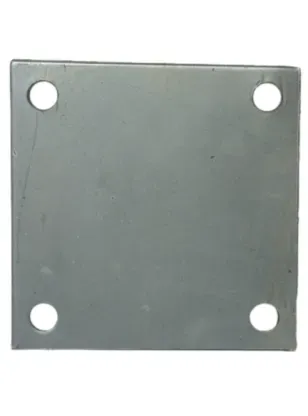loading...
- No. 9, Xingyuan South Street, Dongwaihuan Road, Zaoqiang County, Hengshui, Hebei, China
- admin@zjcomposites.com
- +86 15097380338
- Welcome to visit our website!
frp grate decking
Understanding FRP Grate Decking Benefits and Applications
FRP (Fiberglass Reinforced Polymer) grate decking has emerged as a highly effective solution in various applications, particularly in industrial, commercial, and architectural settings. The unique properties of FRP make it an advantageous choice over traditional materials like steel and wood.
What is FRP Grate Decking?
FRP grate decking is composed of fiberglass materials that are reinforced with resin. This combination results in a lightweight yet incredibly strong product that can withstand harsh environments. The manufacturing process involves the creation of a grid-like structure through pultrusion, a technique that allows for the consistent formation of fiberglass profiles. This structural integrity, along with the corrosion-resistant properties of FRP, makes it an ideal choice for areas exposed to chemicals, moisture, and adverse weather conditions.
Key Advantages of FRP Grate Decking
1. Corrosion Resistance One of the standout features of FRP is its resistance to corrosion. Unlike metal grating, which can rust and deteriorate in moisture-prone environments, FRP resists chemical attacks and has a long lifespan, making it suitable for wastewater treatment plants, chemical processing facilities, and marine applications.
2. Lightweight FRP decking is significantly lighter than traditional steel products. This characteristic not only simplifies transportation and handling but also reduces the structural load on supports, allowing for more versatile design options.
3. Safety Many FRP decks come with a non-slip surface, providing a safe walking area even when wet. Moreover, the inherent properties of FRP make it less prone to splintering and breaking, enhancing safety for users.
frp grate decking

4. Low Maintenance With its durability and resistance to corrosion, FRP grate decking requires minimal maintenance compared to other materials. This results in lower long-term costs, as the need for frequent replacements and repairs diminishes.
5. Environmental Benefits The production of FRP materials often involves less energy-intensive processes compared to metal. Additionally, their longevity means fewer resources are consumed over time, making them a more sustainable option.
Applications of FRP Grate Decking
FRP grate decking is versatile and functions effectively in numerous environments. Common applications include
- Industrial Facilities Used extensively in processing plants, chemical storage areas, and factories where durability and resistance to corrosive substances are critical. - Marine Environments Ideal for docks and piers, where constant exposure to water and salt can deteriorate traditional materials. - Wastewater Treatment Plants The non-corrosive nature of FRP makes it perfect for environments that frequently experience high moisture and aggressive chemicals. - Commercial Building In modern architecture, FRP grating can be utilized in walkways, staircases, and other structural elements where weight and maintenance are a concern.
Conclusion
In summary, FRP grate decking offers a myriad of benefits that make it an attractive choice for various applications. Its unique properties of strength, lightweight nature, corrosion resistance, and low maintenance needs set it apart from traditional materials. As industries continue to seek innovative solutions that improve safety and efficiency, FRP is poised to become increasingly prominent in modern construction and engineering projects. Whether for industrial, commercial, or environmental applications, FRP grate decking is a wise investment that combines performance with longevity.
-
Transform Your Spaces with FRP Grating SolutionsNewsNov.04,2024
-
The Versatility and Strength of FRP RodsNewsNov.04,2024
-
The Excellence of Fiberglass Water TanksNewsNov.04,2024
-
The Benefits of FRP Grating for Your ProjectsNewsNov.04,2024
-
Elevate Your Efficiency with FRP Pressure VesselsNewsNov.04,2024
-
Welcome to the World of FRP Pressure VesselsNewsOct.12,2024
-
Unveiling the Future of Filtration: Why FRP Filter Vessels are a Game ChangerNewsOct.12,2024
